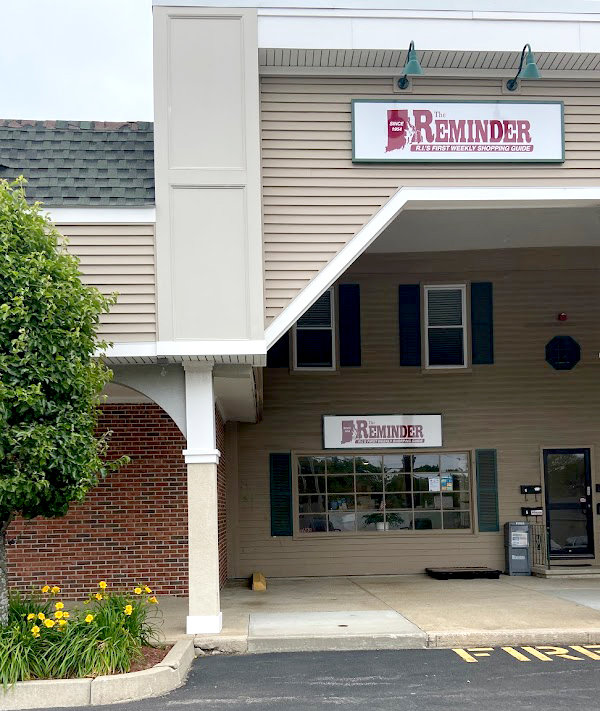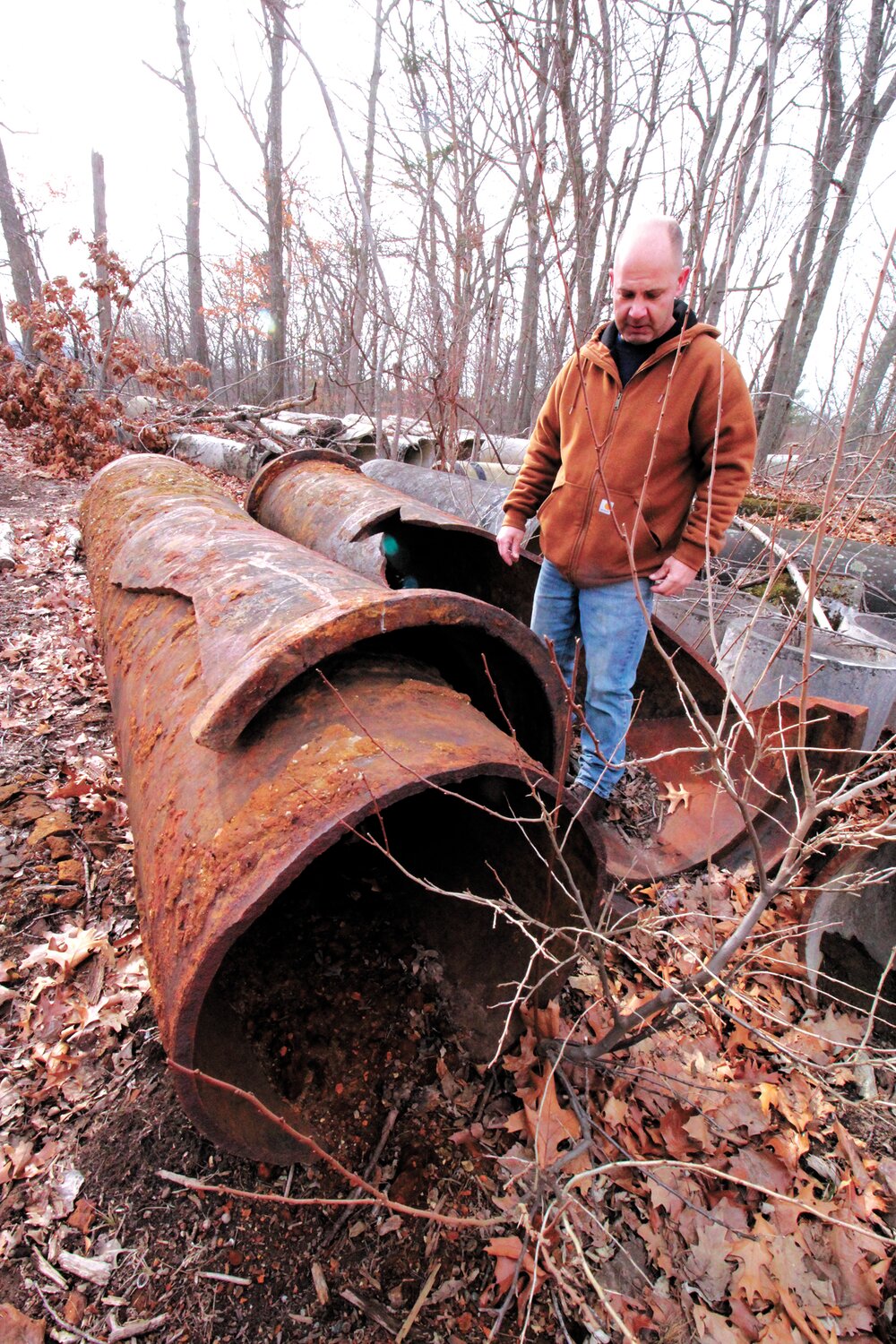A fix finally
Six years after break, restoration of major water transmission starts
Imagine Warwick as a gigantic bathtub that, depending on the time of year, needs to be filled with 15 to 25 million gallons of water daily. Now imagine two large water spigots each capable of …
This item is available in full to subscribers.
Attention subscribers
We have recently launched a new and improved website. To continue reading, you will need to either log into your subscriber account, or purchase a new subscription.
If you are a current print subscriber, you can set up a free website account by clicking here.
Otherwise, click here to view your options for subscribing.
Please log in to continue |
|
Six years after break, restoration of major water transmission starts
Imagine Warwick as a gigantic bathtub that, depending on the time of year, needs to be filled with 15 to 25 million gallons of water daily. Now imagine two large water spigots each capable of delivering up to 7 gallons of water daily. In addition, there are smaller “faucets” capable of delivering a couple of million gallons, but nothing like the “big” pipes.
Now think of what would happen if one of the two large pipes ruptured before reaching the bathtub. Within a short span the remaining big spigot plus the smaller faucets would not be able to keep up with demand. The bathtub wouldn’t go dry but water would be scarce while millions of gallons would create a massive washout or a pond outside the tub. The city would need to impose water restrictions – no laundry, washing cars, watering the grass and maybe even no showers - in order to ensure sufficient pressure throughout the system and fire protection.
Of course, Warwick’s water system isn’t a bathtub but rather a system of 18 miles of transmission mains, 380 miles of distribution mains , a couple of large tanks on Bald Hill Road containing 12 million gallons and a smaller one on Warwick Neck. However, the analogy to two spigots is appropriate. Two 30-inch transmission mains – one that tunnels under Route 95 and the Pawtuxet River in the vicinity of Route 37 and the other not far from the water tanks on Bald Hill Road – supply the bulk of Warwick’s water from Providence Water Supply. Most of Cowesett and Apponaug are supplied by Kent County Water, which manages that system and bills their customers. The Warwick Water Division with about 23,000 customers buys its water from Providence and maintains the city system.
On the night of Dec. 13, 2018, alarms went off notifying the Warwick division of a significant leak. Police were alerted to be on the watch for flooded highways. Nothing out of the ordinary was spotted until an officer noticed there was a pond – an estimated 15 million gallons of water - in the clover leaf on ramp to 95 from 37 westbound. A 30 inch cast iron pipe from one of the two major spigots (transmission mains) had burst.
Two things needed to happen quickly for the Warwick system to remain operational and to avoid any compromise to the Providence system – the transmission main had to be shut and an alternate means of filling the “Warwick bathtub” had to be opened. Fortunately, in designing the system, engineers considered Route 95 and how a break would disrupt traffic. They built a ductile iron bypass parallel to the cast iron pipe. A ductile iron pipe is lined with cement. It is lighter and less venerable to corrosion.
Action came quickly. Although there were complaints of low water pressure the following morning, everything in terms of water service seemed to be normal within a few hours. Few realized the catastrophe that was averted.
Even though it seemed the city was living on borrowed time, action to repair the break and restore the system with the bypass came slowly.
Fast forward more than six years and the first of phases of pipe restoration is slated to begin with the staging of equipment and materials , Tom Simbro of CB Utilities said last Thursday at a meeting with Terry DiPetrillo , Water Division director, Gina Britton, Principal at Stantec Consulting Services Inc. and Tom Simbro of CB Utilities, the general contractor.
“We’re ready to go,” declared Water Division director Terry DiPetrillo.
Under at $2.8 million contract with CB Utilities, the 30-inch cast iron main will be reduced to 24 inches with the introduction of a PVC sleeve. The six inch reduction in diameter is not projected to reduce the capacity of the pipe since the new lining will increase flow. Once the formerly ruptured line is back in service by as early as this July, work will start on the bypass. While shorter in length, the second phase of the project addressing the pipe buried under the Pawtuxet River involves different levels of permitting and planning.
Britton said specifications are in the process of being finalized and the project hasn’t been advertised for bids. Part of the job will include replacing that section of the pipe under the Pawtuxet River. DiPetrillo said this could be accomplished by building a coffer dam around the pipe, pumping out the river water, replacing the pipe and then removing the dam. A $4 million earmark grant obtained by Senator Jack Reed will pay for 80 percent of the work of the full job. The balance is to be picked up by the division.
Like his predecessor, Daniel O’Rourke, DiPetrillo has lived with the nightmare that should the bypass fail, the city quite possibly would need to impose serious water restrictions. All the smaller main transmission lines and emergency interconnections have been made to Kent County Water and Providence Water off Elmwood Avenue.
The ductile iron pipe, which is now serving as a main transmission from the 102 inch Providence Water Supply aqueduct in the vicinity of Oaklawn Avenue in Cranston will get lined. DiPetrillo projected the cost comparable Phase 1.
It’s reassuring that this major transmission line will once again have a backup and you won’t have to wonder about taking a bath.
Keywords
water, pipe








Comments
No comments on this item Please log in to comment by clicking here